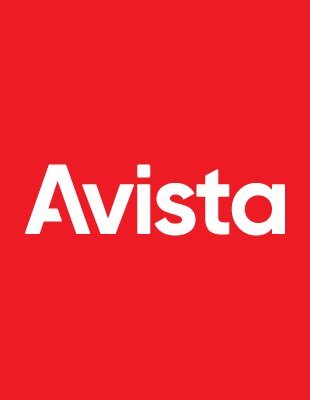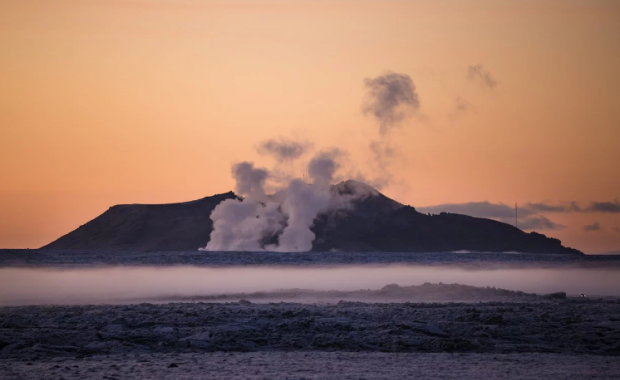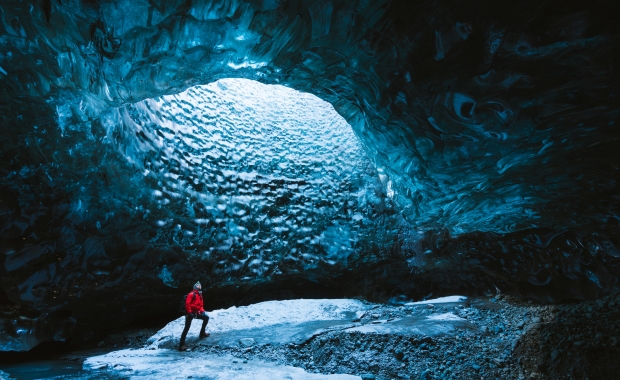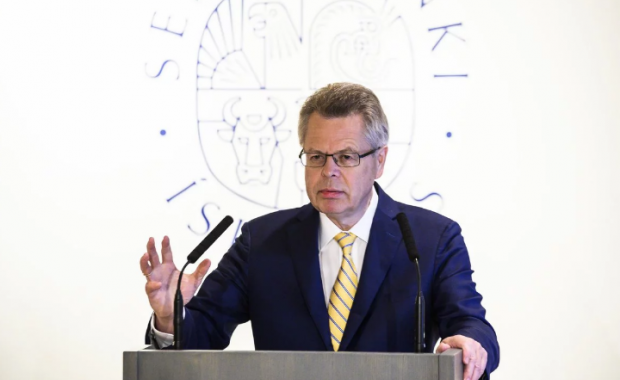NOTE: In our This week in Iceland newsletter on May 13 we incorrectly linked to this article when we had intended to link to an article about the earthquake west of Hekla. We apoloize for this mistake. The correct link is: Footage from Mt. Hekla volcano monitoring webcam shows earth tremble during Saturday's quake
Early morning April 14 2010 one of the most consequential eruptions of Icelandic history began, when the Eyjafjallajökull volcano, hidden beneath the glacier bearing its name, erupted. Although the eruption was relatively small it had profound consequences, shutting down air-traffic over much of Northern Europe and helping to jump-start the tourism boom which pulled Iceland out of the deep economic recession Iceland had found itself in following the 2008 financial crash.
Preceded by seismic activity and a smaller eruption

The eruption in Eyjafjallajökull was preceded by growing seismic and volcanic activity in Eyjafjallajökull. In February the Icelandic Civil Protection Authority had increased monitoring of the area and on March 4 an Uncertainty phase was declared for the area, the lowest of three emergency phases.
Read more: Authorities worry it will be impossible to warn travellers in time in case of Katla eruption
On March 20 an eruption began in Fimmvörðuháls mountain pass, between the Eyjafjallajökull and Mýrdalsjökull glaciers. At the time the Civil Protection Emergency level was still at the uncertainty phase, reflecting the extreme difficulty of predicting volcanic eruptions with any certainty. The Fimmvörðuháls eruption took place next to a popular hiking trail. A large number of hikers were evacuated by helicopter from the area by the Coast Guard. Several farms in the foothills of Eyjafjöll mountain range were also evacuated.
Eyjafjallajökull erupts

The Fimmvörðuháls eruption stopped on April 13, but early next morning a new eruption began further west, beneath Eyjafjallajökull glacier. This eruption, which was far larger and more powerful than the Fimmvörðuháls eruption, took place along a 2 km long rift in the main crater of the volcano.
While the Fimmvörðuháls eruption was primarily an effusive eruption, characterized by a steady flow of lava from the crater, the Eyjafjallajökull eruption was an explosive eruption, where magma and ash is thrown into the air in a violent fashion. The Eyjafjallajökull eruption produced very little lava, but huge quantities of glass-rich ash which was ejected into the atmosphere.
Read more: TV Show 60 Minutes Captures the Eruption of Eyjafjallajökull Volcano
By seven in the morning the eruption had melted its way through the glacier ice cap, allowing the eruption to spew ash into the air. By 10:30 in the morning the ash plume had risen to an altitude of 22,000 feet. The ash cloud from the eruption covered farmland south of the glacier, causing significant disruption and hardship to farmers in the area. It's effects on air traffic in Europe was even larger.
Dramatic impact on air traffic

Some 250 million cubic meters, 330 million cubic yards of tepthra and ash was ejected by the eruption. The ash plume rose to 9 km (5.6 miles). This ash spread all across Europe, causing delays to air traffic in many countries, especially in Northern and Western Europe.
On April 15 countries within the European airspace closed their airspace to commercial jet traffic. A total of 20 countries closed their airspace to commercial jet traffic, causing delays and canceled flights which affected as many as 10 million travellers. This was the largest disruption to air traffic since the Second World War.
Jump-started the tourism boom
At the time of the Eyjafjallajökull eruption many in Iceland feared that it's impact on air travel would cause the tourism industry in Iceland to collapse. The government responded by funding an advertising campaign Inspired by Iceland to encourage people to visit Iceland.
What people failed to realize was that the eruption was really free advertising, as newscasts around the world were dominated by stories about the eruption in the hard to pronounce volcano which managed to shut down air-traffic in Europe. The result was that the number of foreign travellers visiting Iceland grew by 15% in 2011 compared to 2010, by 19% in 2012 and 20% in 2013.
By 2016 Iceland, which had been visited by fewer than 500,000 people annually in 2008, was visited by 1,8 million foreign travellers.
The big one has yet to come
Eyjafjallajökull has erupted rather regularly since the end of the last Ice Age, the most recent eruptions were in 920, 1612 and 1821-23. Historically eruptions in Eyjafjallajökull have been followed by eruptions in its larger sister volcano, Katla.
Read more: All of Iceland‘s major volcanoes showing unusually high levels of activity
NOTE: In our This week in Iceland newsletter on May 13 we incorrectly linked to this article when we had intended to link to an article about the earthquake west of Hekla. We apoloize for this mistake. The correct link is: Footage from Mt. Hekla volcano monitoring webcam shows earth tremble during Saturday's quake
Early morning April 14 2010 one of the most consequential eruptions of Icelandic history began, when the Eyjafjallajökull volcano, hidden beneath the glacier bearing its name, erupted. Although the eruption was relatively small it had profound consequences, shutting down air-traffic over much of Northern Europe and helping to jump-start the tourism boom which pulled Iceland out of the deep economic recession Iceland had found itself in following the 2008 financial crash.
Preceded by seismic activity and a smaller eruption
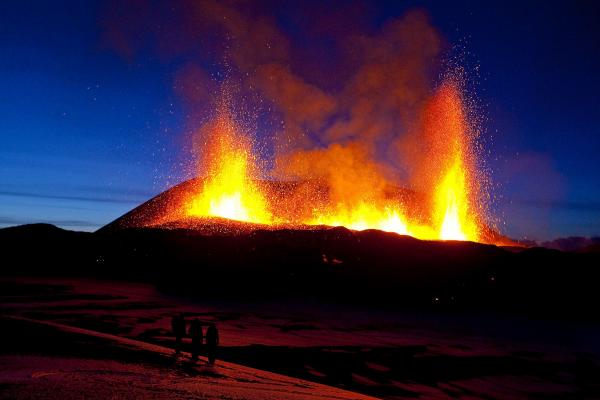
The eruption in Eyjafjallajökull was preceded by growing seismic and volcanic activity in Eyjafjallajökull. In February the Icelandic Civil Protection Authority had increased monitoring of the area and on March 4 an Uncertainty phase was declared for the area, the lowest of three emergency phases.
Read more: Authorities worry it will be impossible to warn travellers in time in case of Katla eruption
On March 20 an eruption began in Fimmvörðuháls mountain pass, between the Eyjafjallajökull and Mýrdalsjökull glaciers. At the time the Civil Protection Emergency level was still at the uncertainty phase, reflecting the extreme difficulty of predicting volcanic eruptions with any certainty. The Fimmvörðuháls eruption took place next to a popular hiking trail. A large number of hikers were evacuated by helicopter from the area by the Coast Guard. Several farms in the foothills of Eyjafjöll mountain range were also evacuated.
Eyjafjallajökull erupts
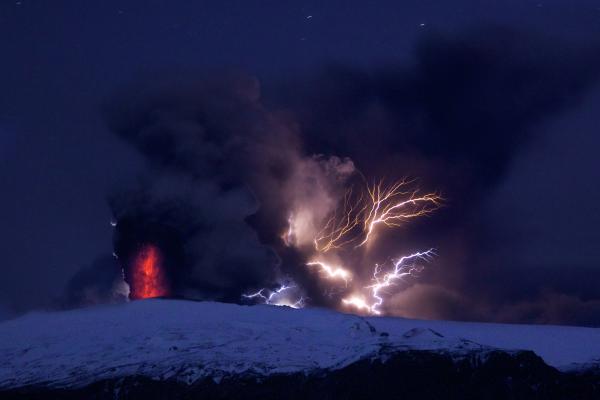
The Fimmvörðuháls eruption stopped on April 13, but early next morning a new eruption began further west, beneath Eyjafjallajökull glacier. This eruption, which was far larger and more powerful than the Fimmvörðuháls eruption, took place along a 2 km long rift in the main crater of the volcano.
While the Fimmvörðuháls eruption was primarily an effusive eruption, characterized by a steady flow of lava from the crater, the Eyjafjallajökull eruption was an explosive eruption, where magma and ash is thrown into the air in a violent fashion. The Eyjafjallajökull eruption produced very little lava, but huge quantities of glass-rich ash which was ejected into the atmosphere.
Read more: TV Show 60 Minutes Captures the Eruption of Eyjafjallajökull Volcano
By seven in the morning the eruption had melted its way through the glacier ice cap, allowing the eruption to spew ash into the air. By 10:30 in the morning the ash plume had risen to an altitude of 22,000 feet. The ash cloud from the eruption covered farmland south of the glacier, causing significant disruption and hardship to farmers in the area. It's effects on air traffic in Europe was even larger.
Dramatic impact on air traffic
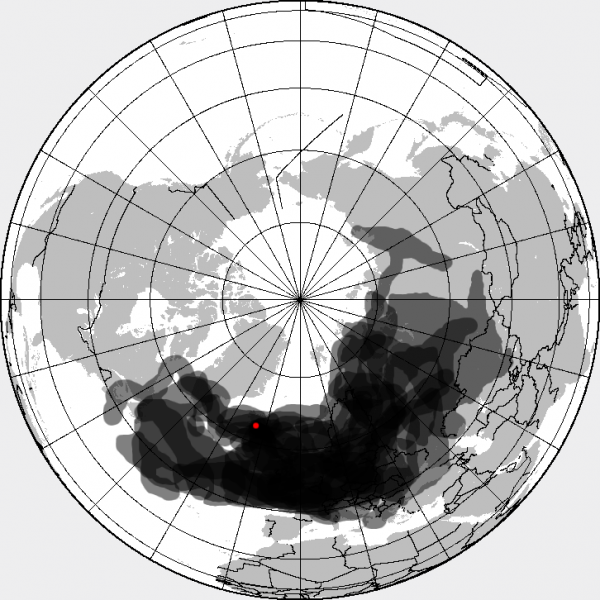
Some 250 million cubic meters, 330 million cubic yards of tepthra and ash was ejected by the eruption. The ash plume rose to 9 km (5.6 miles). This ash spread all across Europe, causing delays to air traffic in many countries, especially in Northern and Western Europe.
On April 15 countries within the European airspace closed their airspace to commercial jet traffic. A total of 20 countries closed their airspace to commercial jet traffic, causing delays and canceled flights which affected as many as 10 million travellers. This was the largest disruption to air traffic since the Second World War.
Jump-started the tourism boom
At the time of the Eyjafjallajökull eruption many in Iceland feared that it's impact on air travel would cause the tourism industry in Iceland to collapse. The government responded by funding an advertising campaign Inspired by Iceland to encourage people to visit Iceland.
What people failed to realize was that the eruption was really free advertising, as newscasts around the world were dominated by stories about the eruption in the hard to pronounce volcano which managed to shut down air-traffic in Europe. The result was that the number of foreign travellers visiting Iceland grew by 15% in 2011 compared to 2010, by 19% in 2012 and 20% in 2013.
By 2016 Iceland, which had been visited by fewer than 500,000 people annually in 2008, was visited by 1,8 million foreign travellers.
The big one has yet to come
Eyjafjallajökull has erupted rather regularly since the end of the last Ice Age, the most recent eruptions were in 920, 1612 and 1821-23. Historically eruptions in Eyjafjallajökull have been followed by eruptions in its larger sister volcano, Katla.
Read more: All of Iceland‘s major volcanoes showing unusually high levels of activity


